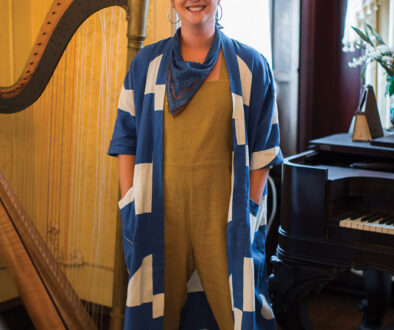The Blue Jay
If you look up into the sky on a beautiful fall day you will typically see squadrons of medium-sized black and white birds flying over. Dozens, hundreds, sometimes thousands, of these round-winged beauties steam overhead with steady wingbeats. They reach the water and clog up the airways as they decide whether they want to chance it over the mighty Delaware Bay. They almost never do. They head off, often circling around the Point looking confused. Suddenly there will be large shrieks as a raptor decides to play with them, or really is trying to get dinner. The noise would work well in a Hitchcock thriller.

Blue Jays only look black and white overhead. Of course, low down it is the blue that jumps out at us. Everyone thinks they know what they look like. I love to watch the horror on people’s faces when I ask them to describe the pattern of a jay’s wing and face in detail. Can you age and sex them? Fear always sets in as it becomes strikingly apparent that we really haven’t looked at them closely. And my word, are they worth looking at.
The pattern of the wings and tail really fascinates me. Why such strong patterns in those colors and why are they in so many different shades that change even more with the light? Take a peek at all the amazing subtle shades of blue with purple thrown in for good measure. You could fill up any color swatch. In flight all of this gets lost and you are struck by its two-tone black and white colors; the broad white trailing edge to the coverts and wing really pop. Their white-faced look is accentuated by a black collar and odd-shaped patches of black that no doubt have a purpose we don’t yet know about. Some of the colors, such as the mauve back are shared by few, if any, other species. Oh, by the way, males and females look the same, and youngsters are so similar to adults that you can rarely separate adults from immature in the field.
Like most jays, Blue Jays can be a devil to see. They hide in woodlands and there are always a boat load more than what you think there are. They are usually in small groups nimbly taking long hops along branches, and they can climb far in a few jumps for such a big bird. They move with purpose, grabbing acorns and other fruit; on the naughtier side they rob nests. They will drop to the ground when there are easy pickings. They are easily spooked and are quick to take a few long hops to back to cover. Once back among the leaves they miraculously disappear, particularly when they stay silent for periods of time. They have a wide array of squaws and rattles; they do a great imitation of the Red-shouldered Hawk.
Sometimes a feeder will win the day; they are a sure bet to get people gawking at their beauty. They come in quickly and quietly; you don’t get long to watch them.
Blue Jays can be found year round in Cape May, and small numbers nest here. They are found in all kinds of woodland, so you can see them just about anywhere. Birds fresh out of the nest can look a little duller and the feathers ‘fluffy’ before they are fully grown. Some winter here.
The big, sometimes huge, numbers are in October and November. This changes from year to year depending on food supplies to the north of us. On bumper breeding years, the sky can seem full of them with layer upon layer into orbit. They are equally spaced out as if to cover the sky. When you see them with their crest stuck up they certainly seem like they have attitude. They have slow steady wing beats, long tails and rounded wings so they move in straight lines and don’t move fast. These features are all designed to be agile in the tight spaces they live in and not far fast or long-distance flights.
It is no coincidence that Blue Jay is the featured bird in the Fall issue of this magazine. Grab your early-morning coffee, get out, go to Cape May Point and look up to the sky. It may well be one of those days when the striped black and white jay squadrons make it a spectacle you will never forget. If not, listen for their squeals as one tries to escape being a hawk’s breakfast. We don’t have it too bad, do we?



